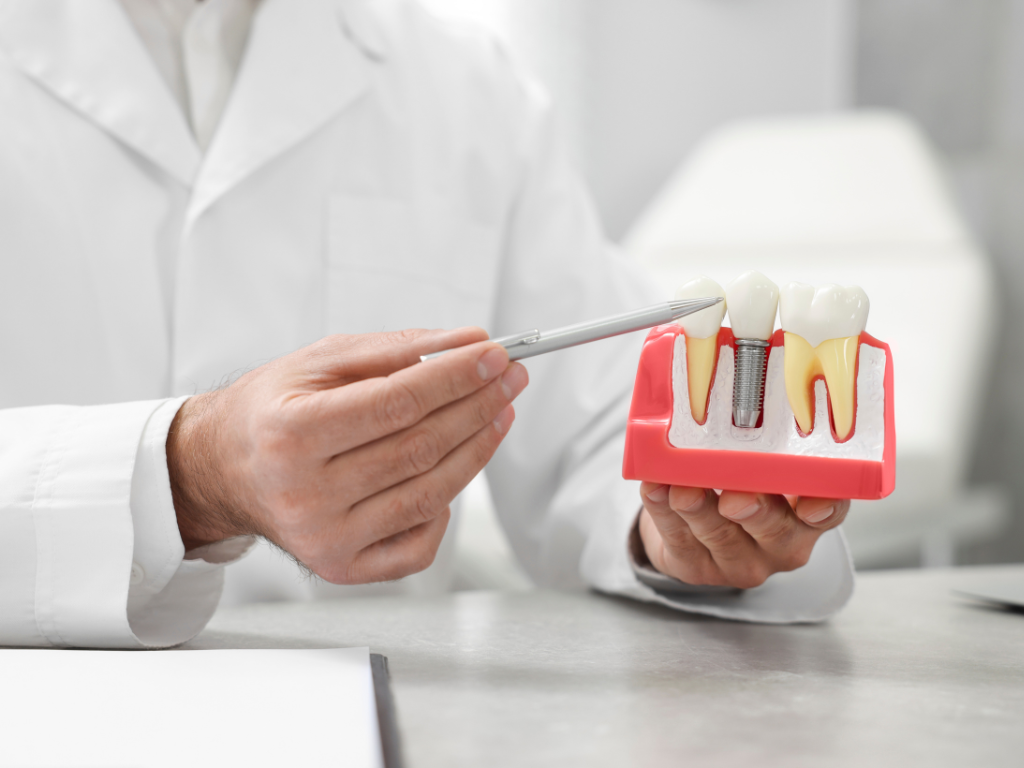Dental emergencies can strike at any time, leaving individuals in distress and unsure where to turn. In Richmond Hill, a quiet suburb on the edge of Toronto’s bustling streets, residents may feel uncertain about their options for urgent dental care. The pain from a broken tooth or an acute infection cannot wait for regular business hours. It is critical to know that help is within reach, and no one needs to endure the agony in silence. This article aims to illuminate the path to fast relief and professional care, ensuring that dental emergencies are managed promptly and effectively.
Introduction:
Imagine you’re enjoying a peaceful evening or weekend when suddenly you’re struck with an excruciating toothache or you meet with an unfortunate incident that damages your teeth. This could be an overwhelming experience, causing not just physical pain but also emotional distress. Knowing how to navigate the situation can spell the difference between rapid recovery and prolonged discomfort. Richmond Hill is equipped with a variety of dental care options designed to address such emergencies without delay. Taking proactive steps and being informed can alleviate the pain and prevent further complications.
The following 10 crucial points will serve as a comprehensive guide to understanding and accessing emergency dental care in Richmond Hill. Each point is elaborated upon with suggestions and detailed information to ensure that you are prepared should a dental crisis arise.
Point 1: Recognize a Dental Emergency
Identifying what constitutes a dental emergency is the first step in seeking appropriate care.
- Severe Toothache: A sign of underlying issues like an abscess or infection.
- Broken or Chipped Tooth: Especially if there is pain or sharp fragments that cause injury to your mouth.
- Knocked-Out Tooth: Time-sensitive; requires immediate attention to save the tooth.
- Lost Filling or Crown: This can lead to further damage or infection without prompt treatment.
- Bleeding Gums: If persistent and accompanied by pain, it may indicate periodontal disease.
- Swelling or Abscess: Indicates infection; if swelling impedes breathing or swallowing, seek urgent care.
- Unexplained Tooth Sensitivity: This may signal a cracked tooth or severe decay.
Point 2: Have a Dental Emergency Kit
Keep a kit ready at home to manage initial discomfort and protect any damaged tooth structure.
- Salt Packet: For saline rinses to clean the mouth and reduce swelling.
- Gauze Pads: To apply pressure and control bleeding.
- Small Container with Lid: To preserve a knocked-out tooth in milk or saliva.
- Dental Wax or Sugar-free Gum: To cover the sharp edges of a broken tooth temporarily.
- Pain Relievers: Over-the-counter analgesics like acetaminophen or ibuprofen, but avoid placing directly on the gums or teeth.
- Cold Compress: To manage swelling and alleviate pain.
- Contact Information: For your dentist and local emergency dental services in Richmond Hill.
Point 3: Know Your Local Emergency Dental Services
Research local dental offices in Richmond Hill that offer emergency services.
- Search online for “emergency dental care in Richmond Hill” for a list of providers.
- Keep a note of dental offices that offer extended hours or weekend services.
- Inquire about walk-in availability or the need to schedule an emergency appointment.
- Confirm if the office can handle specific emergencies (e.g., re-implantation of a knocked-out tooth).
- Check for offices that accommodate patients without insurance.
- Look up reviews or ask for recommendations from friends to find reliable emergency dentists.
- Store contact details in your phone for quick access during an emergency.
Point 4: Understand Your Insurance Coverage
Ensure you know what your dental insurance covers when it comes to emergencies.
- Review your dental plan details beforehand for information on emergency procedures.
- Determine if you need to visit an in-network provider for your care to be covered.
- Check if pre-authorization is required for emergency treatments.
- Understand the deductible, co-pay, and any potential out-of-pocket costs for emergency care.
- Keep your insurance information easily accessible.
- Contact your insurance provider promptly to report the emergency.
- If uninsured, ask about payment plans or financial assistance options at the dental office.
Point 5: Take Prompt Action
Act immediately if you or someone you know encounters a dental emergency.
- Call an emergency dentist or your regular dentist if available; describe the situation clearly.
- Use your emergency dental kit to manage symptoms while waiting for care.
- If a tooth is knocked out, gently rinse it without scrubbing and attempt to reinsert it into the socket or preserve it in milk/saliva.
- Apply pressure to a bleeding site with a clean gauze or cloth.
- Utilize a cold compress to minimize swelling and pain.
- If the injury is traumatic and involves more than just the teeth, consider visiting a hospital emergency room.
- Avoid using topical pain relievers or heat on the affected area, as they may worsen the situation.
Point 6: Follow Post-Emergency Care Instructions
Attending to follow-up care is just as important as addressing the initial emergency.
- Adhere to all instructions provided by the emergency dentist.
- Schedule a follow-up appointment, if recommended, to ensure proper healing.
- Take any prescribed medications as directed.
- Continue a regimen of good oral hygiene, but be gentle around the affected area.
- Avoid eating hard or chewy foods that could disrupt the treatment.
- Monitor for signs of infection or persistent pain, and report them to your dentist.
- Rest and avoid strenuous activity to aid in recovery.
Point 7: Prevention Is Key
Minimize the likelihood of dental emergencies with regular care and precautions.
- Maintain routine dental check-ups and cleanings to detect potential issues early.
- Use mouthguards during sports or physical activities to protect against trauma.
- Avoid chewing on hard objects like ice, pens, or hard candy that can crack or chip teeth.
- Practice good oral hygiene, including brushing twice a day and flossing daily.
- Be aware of changes in your oral health and seek proactive treatment for minor issues.
- Educate children on safe practices to prevent dental injuries.
- Stay informed about common dental emergencies and how to avoid them.
Point 8: Mindful Pain Management
Managing pain effectively is crucial while awaiting emergency care.
- Start with a saltwater rinse to clean the area and reduce inflammation.
- Opt for over-the-counter pain relievers; follow the dosage instructions carefully.
- Apply an ice pack on your cheek for 20-minute intervals to ease discomfort.
- Avoid hot beverages or foods that might exacerbate the pain.
- Elevate your head when lying down to help reduce swelling.
- Refrain from applying aspirin directly to the gums; it can cause tissue damage.
- Consult with the emergency dentist about any home remedies to ensure they’re safe.
Point 9: Educate Yourself on Dental First Aid
Knowing basic dental first aid can be lifesaving during an emergency.
- Enroll in a first aid course that includes dental emergencies, if available.
- Keep updated with online resources or pamphlets on dental first aid from your dentist.
- Learn how to handle common dental injuries, such as chips, fractures, or lost teeth.
- Understand how to control bleeding with proper pressure techniques.
- Gain knowledge of natural remedies that can provide temporary relief.
- Teach family members, especially those who might be alone during an emergency, basic dental first aid.
- Keep a printed guide of dental first aid steps in your emergency kit.
Point 10: Utilize Technology for Assistance
Use technology to your advantage during a dental emergency.
- Download dental emergency apps that guide you through first aid steps.
- Use your smartphone to locate the nearest emergency dental clinic.
- Keep digital copies of your dental and health records for quick reference.
- Consider teledentistry options for immediate professional advice.
- Take and send photos of the injury to your dentist if unable to visit immediately.
- Use reminder apps to keep track of medication times and follow-up appointments.
- Store emergency numbers in your phone for easy access.
Conclusion:
Dental emergencies, while distressing, can be managed effectively with the right knowledge and resources. Residents of Richmond Hill have numerous options to address urgent dental care needs quickly. By understanding the signs of a dental emergency, maintaining a dental emergency kit, and knowing where to seek help, you can minimize discomfort and ensure a swift recovery. Remember, swift action, informed choices, and proper aftercare are crucial to overcoming a dental crisis. Don’t let the fear of the unknown prolong your pain—help is readily available.
Don’t let another season pass by without a dental checkup!
- Name: Smiles At Richmond Hill
- Address: 10271 Yonge Street, Suite 100 Richmond Hill, ON, L4C 3B5
- Phone: 613-822-1500
- Email smilesatrichmondhill@gmail.com to schedule an appointment today.
We’re here to provide you with immediate relief and compassionate care.
Your Smile is Our Pride – Even in an Emergency.
-
A1: Signs of a dental emergency include severe pain, bleeding, loose or knocked-out teeth, swelling, and infections. If you’re unsure, it’s best to contact an emergency dentist for advice.



